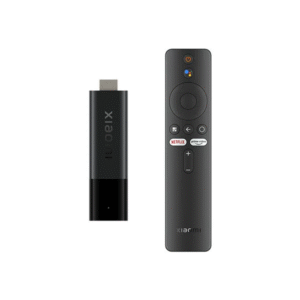A capable emergency management software can tilt the scales from chaos to control. In the event of a natural disaster, worksite mishap, cyber-attack, or other crisis, most businesses require dedicated systems to organize, respond to, and recover from events within a limited timeframe.
With multiple choices, picking the right software can be a daunting chore. It can be helpful to comprehend what functionalities are most important to make an informed choice. Here are five key functionalities to consider when selecting emergency management software .

1. Real-Time Notification and Communication
In a crisis, delayed communication is a disaster. Your solution must enable two-way, real-time notification to involve everyone who needs to be involved, from first responders to internal stakeholders and external collaborators.
Look for solutions that offer:
- SMS, email, and push.
- Pre-defined message templates.
- Message receipt confirmation and response tracking.
- Mobile app support for mobile notifications.
Cloud-In-Hand® Solutions Platform provides rich communication solutions that reach people at once, wherever they are or how they are connected. With instant alerts, no one gets left behind when time is of the essence.
2. Effective Resource Management
Disasters and emergencies call for instant access to material resources, such as vehicles, people, equipment, and medication. An effective emergency management system should have real-time asset tracking and resource management features that facilitate groups to send required resources in a timely and efficient manner.
Some of them are:
- Real-time status of assets (in stock, in use, or under maintenance).
- Tracking field workers and vehicle locations.
- Management of variable categories for different resources.
- Integration support with Barcode or RFID systems for rapid updates.
RFID and barcode scanner-based asset tracking integrated is a constituent of Cloud-In-Hand® Solutions Platform, allowing teams to track resources with ease and manage them. Warehouse management configurations are integrated with field activities, all of which are fed into a single platform, ensuring the process runs smoothly.
3. Easy User Interface and Mobile Access
Disasters strain individuals, and your staff don’t require confusing, stressful software to overwhelm them. Select systems with instinctive, user-friendly interfaces that even non-technical team associates can easily guide. Ensure, too, that the software is mobile optimised or has a reliable mobile application for use in the area.
Consider:
Easy-to-train dashboards.
iOS and Android mobile capability.
Offline availability features are available when the internet connection is intermittent.
The Cloud-In-Hand® Solutions Platform has some of the best mobile-first capabilities, with emergency teams being able to use key functions anywhere. Through offline access and accessible interfaces, individuals can respond quickly, even in distant or hostile areas.
4. Integration with Existing Systems
Your emergency management system is not an island by itself. It must be integrated with other systems your organization is already using, e.g., HR databases, access systems, GIS mapping software, or building management systems.
When buying possibilities, ask
API access for custom integration.
Import/export data capabilities.
Ability to integrate with generic enterprise software.
SSO (Single Sign-On) and control of user access.
Cloud-In-Hand® Solutions Platform is extremely well known for integration-readiness and flexibility. Ranging from synchronizing personnel databases to combining with existing GIS infrastructure. The platform allows seamless data exchange and system exchange, eliminating duplication and manual data entry.
5. Real-Time Reporting and Post-Incident Analysis
Adequate emergency management does not end after the problem has been identified. Post-incident reporting is required for calculating response significance, determining gaps, and improving future enthusiasm.
The software needs to offer:
Real-time capture of incident data.
Configurable reports from the report dashboard.
All communications and decisions are recorded semi-automatically.
Review or compliance report to be exported.
Everything that is ever done in an emergency is recorded and can be analyzed retrospectively using the Cloud-In-Hand® Solutions Platform. This enables auditing of performance, proof of compliance with regulation, and more informed decision-making for the future.
6. Bonus Consideration: Scalability and Customization
Every business is unique. You are a school system, hospital, factory, or government agency; your needs will be exceptional. Select software that evolves with your operations and evolves along with you as you grow, and is tailored to your procedures and risks.
Note: Scalability means it grows along with you.
Cloud-In-Hand® Solutions Platform is characterized by scalability and modules that can be tailored. Small groups, company-wide deployments – the system is being put to effective use in a variety of settings and organizational structures.
Conclusion
Selecting the proper emergency management software is not an IT decision; it’s integral to your organization’s readiness and safety plan. Prioritize features such as real-time communication, mobile access, resource tracking, integration, and reporting, so you’re ready for whatever comes next.
With a system that does all this and more, the Cloud-In-Hand® Solutions Platform offers a realistic, simple, and dynamic solution that is designed to support your team in the moments that matter the most.






